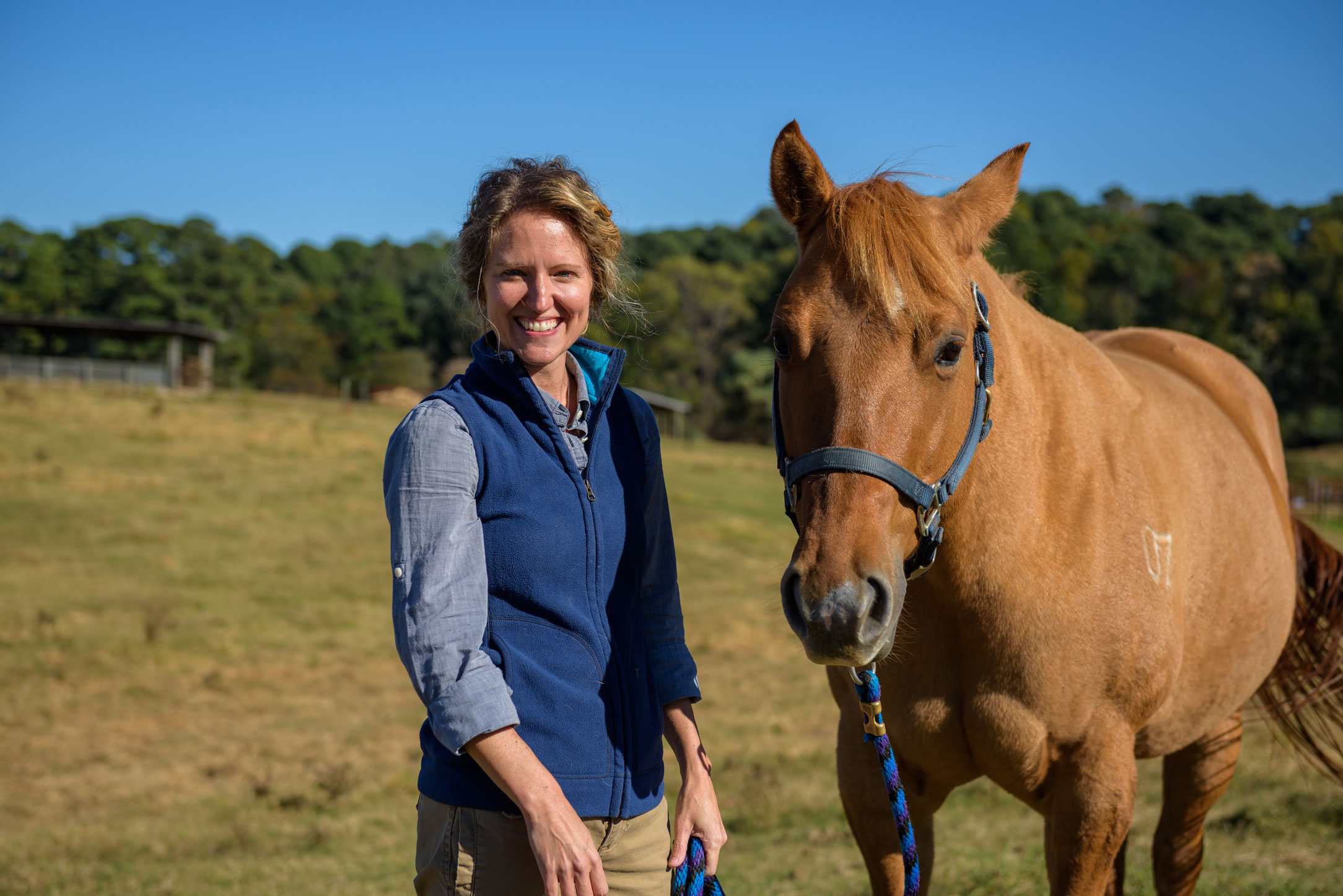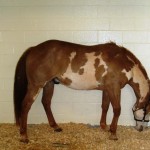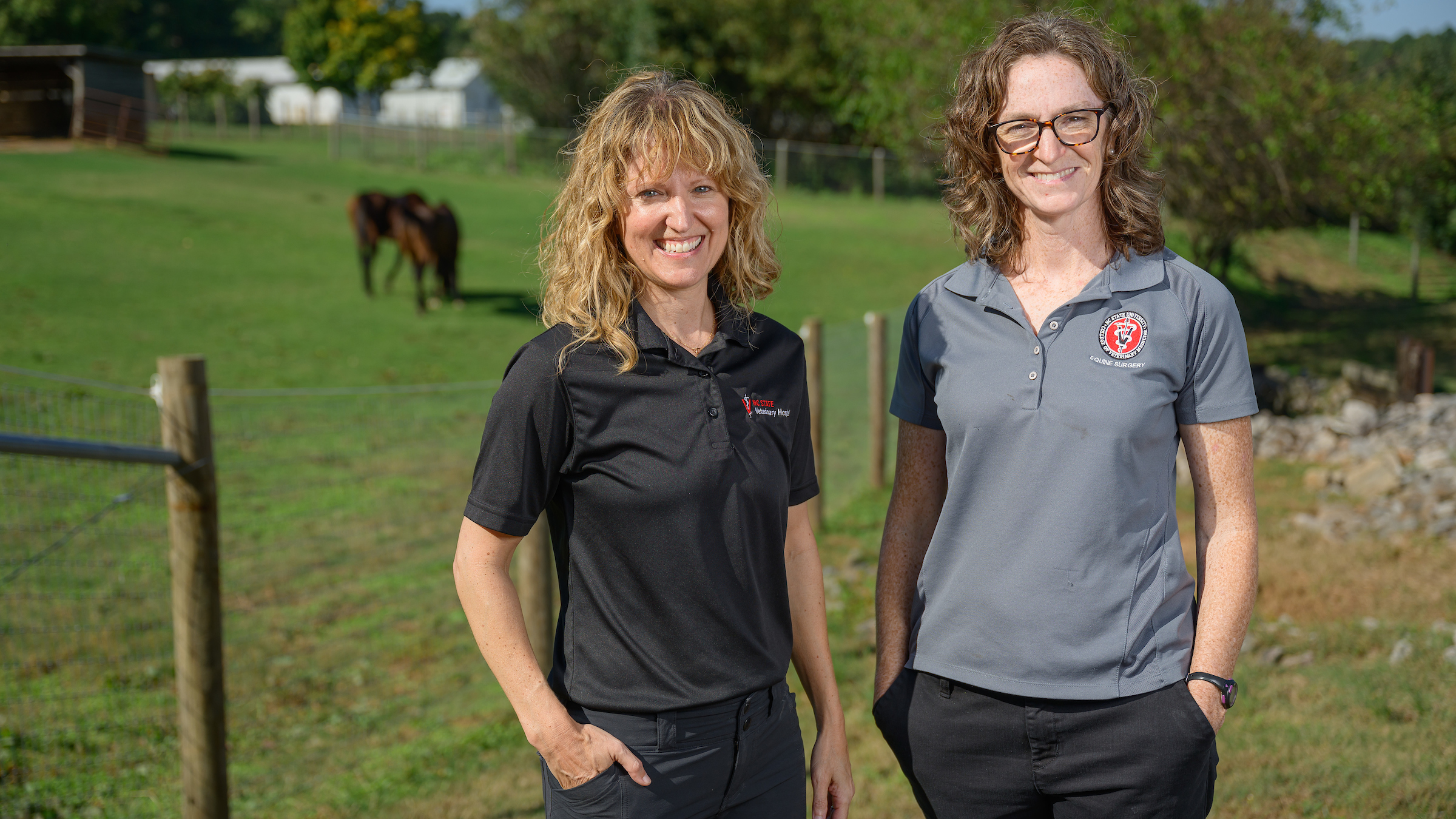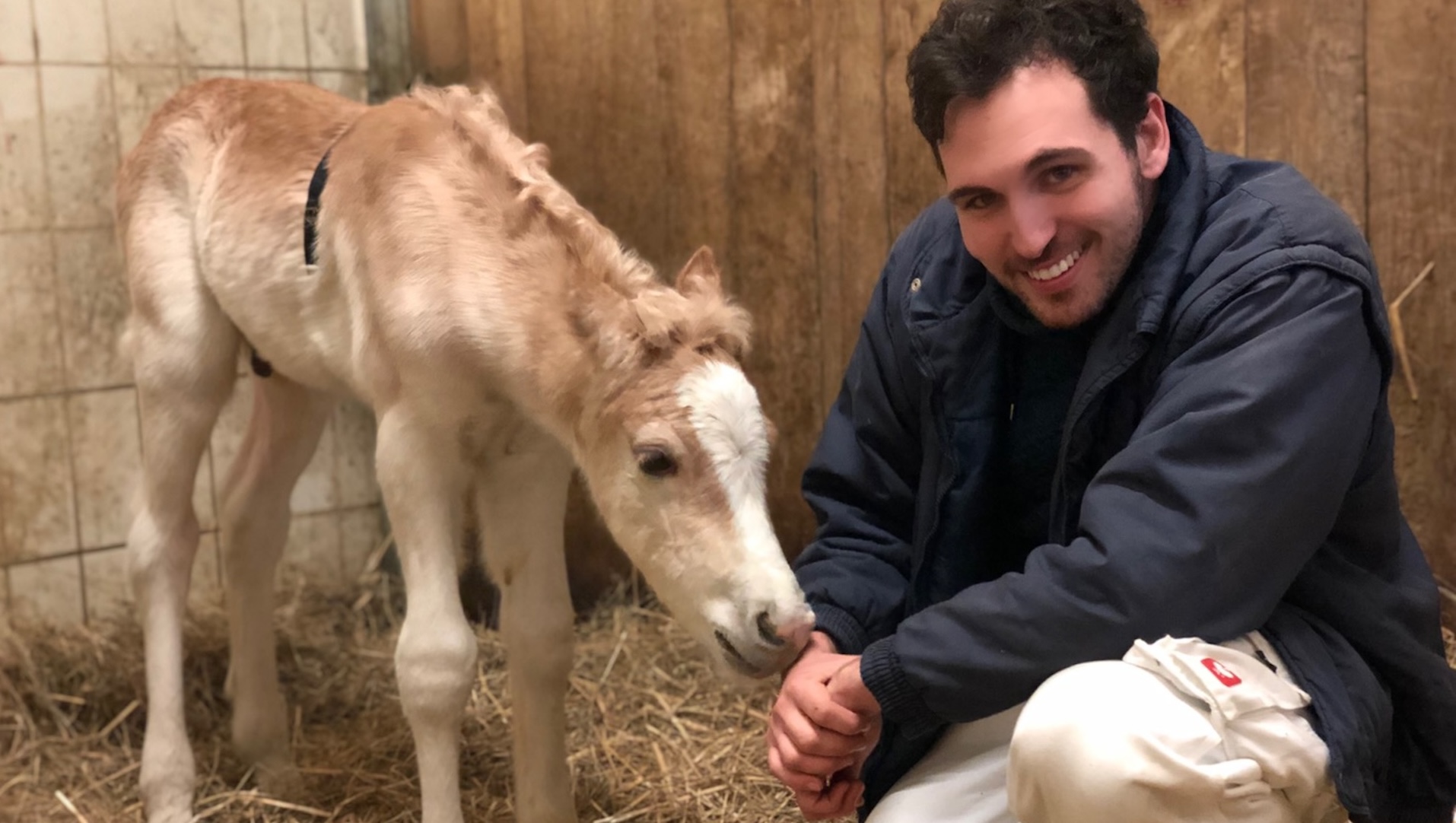NC State University Veterinarian on Protecting Horses from Eastern Equine Encephalitis

State of North Carolina officials have now confirmed at least one equine death attributed to Eastern Equine Encephalitis, a viral disease that affects the nervous system in people as well as horses. Most equine cases of the disease are reported at the end of summer and early fall so the EEE season is beginning. While the disease can be deadly, it is entirely preventable with the appropriate vaccination.
Dr. Katie Sheats, an equine specialist with the NC State Veterinary Hospital, answers some questions about Eastern Equine Encephalitis.
What is EEE?
Eastern Equine Encephalitis (EEE) is a disease, spread by mosquitoes, that causes inflammation of the brain and spinal cord. This is a serious disease and all equine cases should be immediately reported to the State Veterinarian. In North America, the EEE virus is maintained between passerine birds and mosquitoes. Passerine birds—wild indigenous birds such as wrens, starlings, crows, and swallows—develop detectable levels of the virus in their blood when bitten by an EEE-carrying mosquito. They do not develop the disease, however, but serve as a reservoir host. Another mosquito will feed on the infected bird, acquire EEE, and spread the disease to yet other birds, maintaining the virus in the environment. The problem is when the mosquito that fed on an infected bird bites and transmits the virus to a horse. Unlike birds, horses are “dead-end hosts” and cannot transmit the virus back to mosquitoes. Other horses or people cannot obtain EEE from the infected horse. The number of cases in North Carolina has varied from a high of 122 in 2003 to zero in 2007. This number is affected by a variety of factors including temperature, rainfall, and compliance with vaccination recommendations.
What symptoms does an infected horse present?

Horses can develop infection and low-grade fever within three days of acquiring the virus. The first visible signs, usually within five days, include decreased appetite and depression. As inflammation increases along the spinal cord and brain, horses can exhibit gait incoordination, hyperexcitability, teeth grinding, circling and head pressing. Some horses may lean against the wall or stand with their back legs crossed. Partial or total blindness may develop. The progressively worsening neurologic disease often appears as severe to profound depression, explaining the reason for the common name of “sleeping sickness”. These horses stand as if immobile with their heads hanging very low; their eyelids may become swollen and partly closed, their lips and tongue may be slack. Terminally affected horses eventually become recumbent and comatose and frequently exhibit seizure activity prior to death. There is no specific treatment for EEE and mortality rates are commonly 90%, regardless of the level of supportive care. Most horses die within five days after the start of symptoms. Those that do survive may have persistent neurologic signs and may not be suitable for riding.
How is EEE in horses diagnosed?

It is important to understand that the clinical signs of EEE in horses are not specific. Other possible diagnoses for horses exhibiting signs consistent with EEE include several other viruses, including West Nile Virus, Western Equine Encephalitis, Neurogenic Equine Herpes Virus-1, Rabies, severe liver disease (hepatic encephalopathy) and equine protozoal myelitis (EPM). For a proper diagnosis, veterinarians will take blood samples and a sample of cerebrospinal fluid from the space around the spinal cord and examine them for specific changes and antibody levels that may indicate recent infection or disease. Unfortunately, because the disease progresses so rapidly regardless of supportive treatment, definitive diagnosis of Eastern Equine Encephalitis prior to death is often impossible. Postmortem diagnosis of horses that die following clinical signs consistent with EEE is essential to collect the appropriate specimens for submission to state diagnostic laboratories.
Given the seriousness of the disease, how do owners protect their horses?
They should talk with their veterinarian. It is imperative for owners to remember all horses in the southeastern U.S. are at risk of EEE exposure every year, regardless of age, use, or travel routine. As noted, this disease is highly fatal and treatment is non-specific, so prevention is key.
Vaccines against EEE virus, as well as Western Equine Encephalitis virus, are readily available and effective. Vaccination for West Nile Virus, another mosquito-borne neurologic disease, should be administered on the same regimen as the EEE/WEE vaccine. Horses receiving these vaccinations for the first time should receive a second vaccination four weeks later and then a booster twice annually. In the southeast, booster vaccinations should be given once in early spring and again in later summer or early fall. Broodmares should be vaccinated four to six weeks prior to foaling to ensure presence of antibody in colostrum. In order to avoid interference from maternal antibodies, foals should not receive their first vaccination until four to six months of age. This first vaccine should be followed by two additional boosters in their first year. Vaccination protocols must be followed. Inadequate vaccination is as much of a risk factor for disease as failure to vaccinate.

A second preventive measure available to all owners involves decreasing the number of arthropod vectors available to transmit the virus between birds and horses. Principles of vector control involve reducing mosquito numbers and reducing mosquito access to horses. Mosquitoes can breed in any puddle that lasts longer than four days so horse owners should manage standing water that accumulates in farm equipment and maximize soil drainage whenever possible. Steps to reduce mosquito access to horses include placing fans inside barns or stalls to maintain air movement, particularly in the early evening when mosquitos are most active; applying an insecticide to individual horses (permethrin-based products are effective for this purpose); and finally fly sheets can also help protect horses from being bitten during pasture turn-out.
Is EEE a risk to human health?
Although occurrence is rare humans are at risk of contracting the Eastern Equine Encephalitis virus. Like horses, humans are exposed to the virus by mosquito bites and are considered “dead-end” hosts. The disease is fatal in about 50 percent of human cases, with young children and the elderly most at risk. People can minimize their risk of exposure to these and other mosquito borne diseases by applying insect repellant, covering exposed skin, and avoiding outdoor activities at dusk and nighttime when mosquitos are most active.
For more information:
American Association of Equine Practitioners
NC Department of Health and Human Services, Epidemiology
U.S. Geological Survey’s Eastern Equine Encephalitis map
Centers for Disease Control and Prevention
- Categories:


